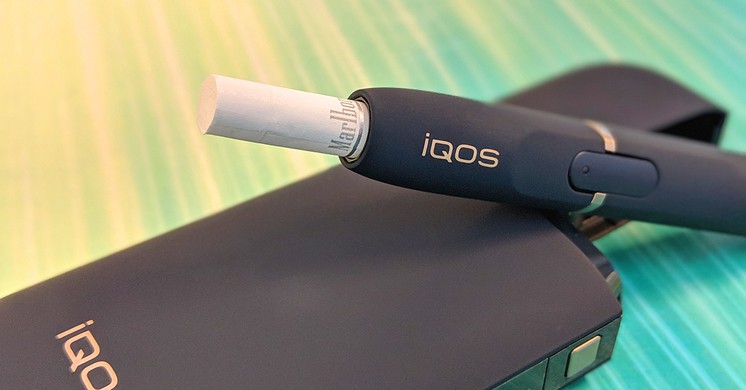Tobacco Manufacturers Are Back with a Vengeance
May 30th, 2019 | viewpoint
It is ironic to write a blog for World No Tobacco Day when the use of electronic cigarettes (e-cigarettes) is replacing traditional cigarettes and has become an epidemic unto itself. Just a few years ago, tobacco control experts were talking about the “end game” of finally beating the proliferation of tobacco and cigarette use as adult smoking rates in many countries continued to plummet from a high of 50% to about 15%, and in the U.S. among twelfth-graders from almost 33% to less than 5% percent.
However, big tobacco companies have made a vigorous come-back by muscling their way into the e-cigarette market.
In 2018, the U.S. Surgeon General declared teen use of e-cigarettes—most of which contain nicotine, an addictive drug—an epidemic, given that nearly 40% of high school seniors now “vape.” And vaping is becoming popular in many other countries where JSI works.

JUUL, one of the most popular e-cigarette brands, now dominates the market in the U.S. since Philip Morris’s Altria bought 35% of the company. In fact, most teenagers just refer to “vaping” as “juuling” because JUUL has saturated the e-cigarette market by making it’s nicotine vaporizer products attractive, especially to teens; JUULs look like laptop storage devices and the vapor from the nicotine and other oils heated up in them are hard to see when exhaled, making their use often imperceptible. They are also easy to conceal and are available in fruity and other flavors that appeal to teens. According to the Truth Initiative, many of the JUUL pods and its imitators contain an amount of nicotine equivalent to one pack of cigarettes or 200 puffs. They are promoted through social media by the industry using proven advertising and marketing gimmicks, and by teenagers themselves.
Today, the great public health hazard is that a whole new generation of nicotine-addicted youth is being created.
The tobacco industry has always been in the “nicotine business,” so e-cigarettes and the new I-Quit-Ordinary-Smoking (IQOS) product promoted as a “heat not burn” electronic tobacco devices are a boon to them as regular smoking has been on the decline in industrialized countries. Many teenagers are likely to go on to smoke regular cigarettes (smoking), and a recent study in the Journal of American Medicine indicated that nearly 1-in-3 high school students and about 1-in-4 middle school students reported using cannabis in e-cigarettes (the “gateway effect”). In the meantime, trillions of regular cigarettes are still sold around the world.

Another pernicious effect of e-cigarettes has been the split in the tobacco control movement. Many former tobacco control advocates now promote these products as a way to quit smoking, ostensibly to achieve the “end game,” even though they have not been scientifically proven to do so. According to the Centers for Disease Control, e-cigarettes have the potential to benefit some people but harm others. And scientists still do not fully understand e-cigarettes’ effectiveness for quitting smoking. Even one of the co-founders of the World Health Organization’s Framework Treaty for Tobacco Control now heads the Foundation for a Smoke-Free World, which is funded by Philip Morris International, one of the largest tobacco manufacturers. These erstwhile colleagues seem to ignore increasing evidence that cessation is not achieved on a population basis and that e-cigarettes come with their own toxicities and are beginning to rival smoking in causing heart and lung disease. It took decades to learn what happens to people who smoke cigarettes; it would be unconscionable to wait for people to become sick and die to prove the same for e-cigarettes.
We must return to the proven tobacco control strategies of counter-advertising, taxation, and bans on e-cigarette use in public spaces, as well as new tactics like collaborating with social media companies to combat the glamorization of any form of tobacco or nicotine use.
JSI staff are contributing their experience working with community groups and local authorities on these elements. JSI has developed an e-learning model called “What’s Up with E-cigarettes,” now being implemented in Rhode Island and available to health care providers interested in learning about e-cigarettes.
We should have no illusions about how difficult the effort will be, and that we must stay the course for the long term. As tobacco control guru Stanton Glantz has said, “The war against the tobacco industry is never over.”
Norbert Hirschhorn is a physician specializing in the public health of women, children, and communities around the globe. In 1993 he was commended by President Bill Clinton as an “American Health Hero.” His work has been recognized by awards from the Dana Foundation and the Linda and Kenneth Pollin Foundation. Norbert was a founding member of JSI and is a current member of JSI’s Tobacco Resource Group.
We strive to build lasting relationships to produce better health outcomes for all.